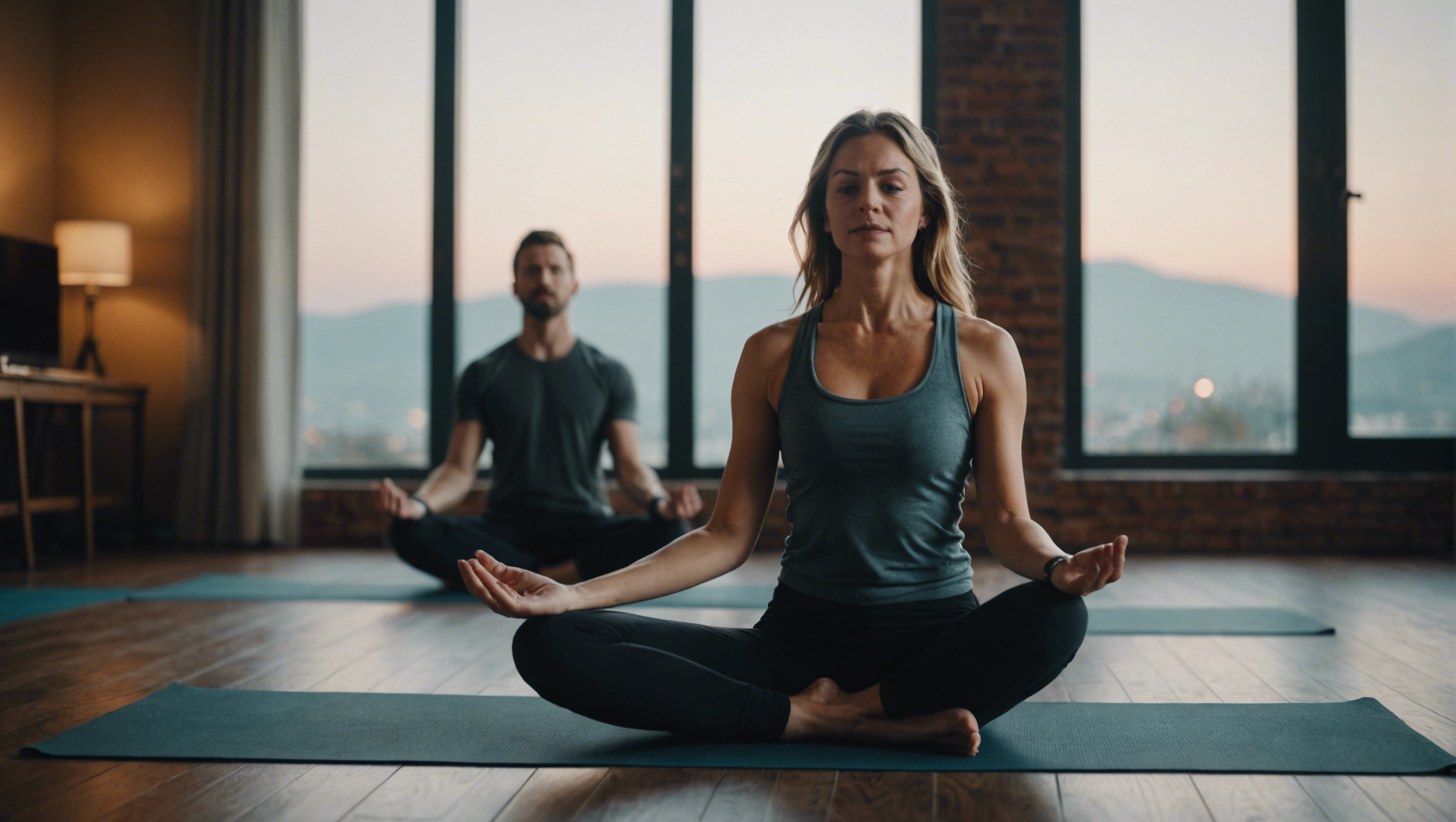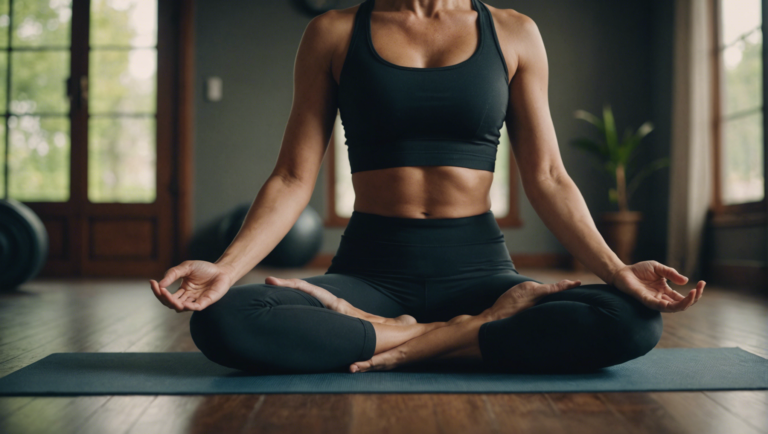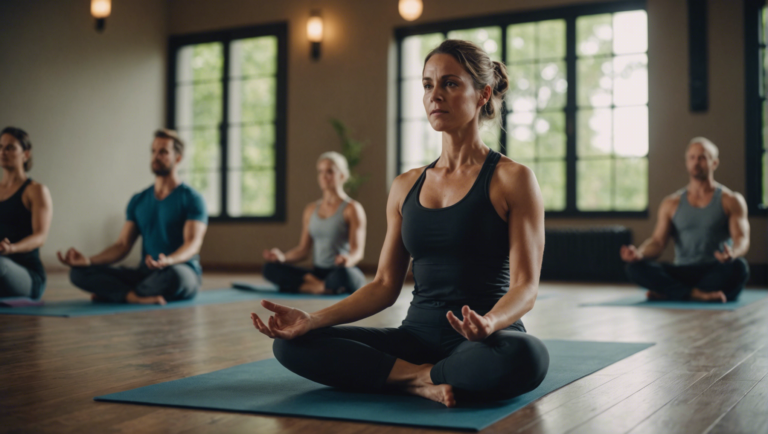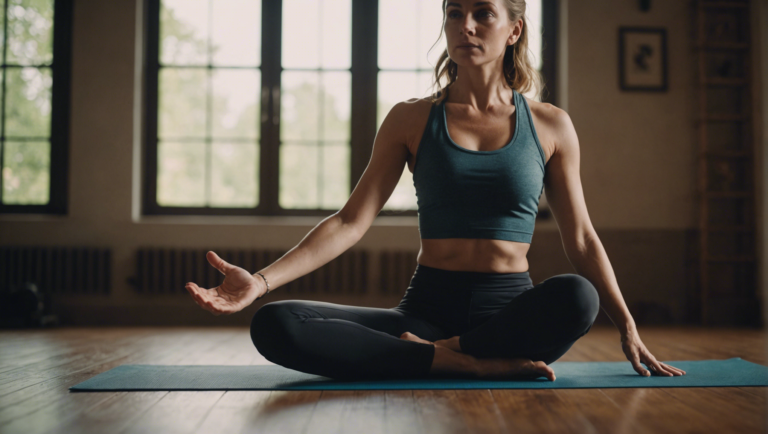Optimal Frequency: How Much Yoga Should You Do Per Week?
Determining the Optimal Yoga Frequency for Your Lifestyle
Understanding Your Personal Yoga Goals
When embarking on a journey to integrate yoga into your lifestyle, the first step is identifying what you hope to achieve through your practice. Yoga can serve various purposes, from enhancing physical fitness to supporting mental health or spiritual growth. The clarity of your yoga goals is essential in determining the frequency of your practice. For many individuals, the aim might be a combination of building strength, improving flexibility, and achieving a tranquil mind. Each goal necessitates a distinct approach to how often you should unfurl your yoga mat each week.
Aligning Yoga Practice with Lifestyle Demands
Your daily routine plays a crucial role in how you can realistically incorporate yoga into your life. A busy professional or a parent with young children might find it challenging to dedicate as much time to yoga as someone with a more flexible schedule. However, yoga’s adaptability means there’s always a way to embed it into the busiest of lifestyles. Short, daily sessions might suit those with limited time, while longer classes a few times a week might be more feasible for others. Adjusting your yoga frequency to fit your life, rather than forcing your life to adapt to yoga, is key to a sustainable and enjoyable practice.
Achieving Balance Through Varied Practice
Variety is not only the spice of life but also a core component of a balanced yoga practice. Different styles of yoga can offer various benefits – for instance, Vinyasa for cardiovascular health, Yin for flexibility and relaxation, and Hatha for balance and strength. different yoga styles into your routine can help you achieve a holistic practice that keeps your body challenged and your mind engaged. This diverse approach might mean practicing different styles on different days or integrating various elements into a single session.
Listening to Your Body and Mind
One of the fundamental teachings of yoga is the importance of mindfulness and attunement to one’s own body and mind. This principle is particularly relevant when determining the optimal frequency of your yoga practice. There will be days when your body needs rest or when your mind is too distracted for an effective session. The flexibility to reduce intensity or skip a day altogether without guilt is crucial. Similarly, there might be times when your body craves more movement or your mind needs the calming influence of yoga more frequently. Tuning into these cues is essential for a yoga practice that truly serves you.
The Role of Consistency Over Frequency
While the question of how much yoga is enough is common, it’s vital to shift the focus towards consistency rather than quantity. Developing a regular practice, even if it’s just a few minutes a day, is more beneficial than doing longer sessions sporadically. Consistency helps in developing a habit, ensuring that yoga becomes a seamless part of your daily or weekly routine. Furthermore, consistent practice aids in gradually improving flexibility, strength, and mindfulness without the risk of injury or burnout.
Adapting to Life’s Evolving Phases
Life is dynamic, and your yoga practice should be too. What works for you now might not be suitable in a year’s time. Regularly reassessing your goals, commitments, and physical condition is necessary to adjust your yoga frequency accordingly. This adaptable approach ensures that yoga continues to benefit your well-being, regardless of life’s inevitable changes.
Achieving the optimal yoga frequency is less about adhering to a fixed number of sessions and more about creating a flexible, varied practice that aligns with your goals, lifestyle, and the unique needs of your body and mind. By paying close attention to these factors and being willing to adjust as necessary, your yoga practice can remain a rewarding, enriching part of your life for years to come.
The Impact of Yoga Frequency on Physical and Mental Well-being
Yoga, an ancient practice that merges the mind, body, and spirit through breathing exercises, poses, and meditation, has been lauded for centuries for its comprehensive health benefits. With the rise of wellness culture, many individuals find themselves pondering the optimal frequency of yoga practice to maximize its benefits on physical and mental well-being. Understanding the intricate balance between practice frequency and wellness outcomes can help practitioners harness the full potential of their yoga journey.
Determining Your Ideal Yoga Schedule
When it comes to establishing a yoga routine, one size does not fit all. The ideal frequency of yoga practice varies significantly based on individual factors such as physical fitness, personal goals, time availability, and yoga intensity. For beginners, starting with two to three sessions per week can facilitate a gentle introduction to the practice while allowing the body to adapt to new movements. As endurance builds and familiarity with poses increases, practitioners may feel compelled to increase their sessions to daily practice or maintain a moderate frequency that aligns with their lifestyle and wellness objectives.
The Physical Impacts of Regular Yoga Practice
The physical benefits of yoga are vast, affecting various aspects of bodily health. Regular practice enhances flexibility, strength, balance, and endurance. It also plays a critical role in mitigating chronic pain, such as lower back pain and arthritis. A study published in the Journal of Physical Activity and Health found that engaging in yoga sessions multiple times per week significantly improved physical health markers in participants over a period of just eight weeks. This indicates that frequent, consistent practice can lead to tangible improvements in physical well-being.
Yoga’s Influence on Mental Health
Beyond the physical realm, yoga offers profound mental health benefits. It has been shown to decrease levels of stress, anxiety, and depression, fostering an overall sense of well-being. The meditative aspects of yoga, emphasizing mindfulness and presence, can transform one’s mental landscape, promoting calmness, clarity, and stress resilience. For those seeking solace in the mental health benefits of yoga, engaging in daily practice—even if for a shorter duration—can be particularly efficacious. A systematic review in the International Journal of Preventive Medicine highlights the positive impact of regular yoga practice on mental health, underscoring its potential as a complementary approach to traditional mental health interventions.
Listening to Your Body: The Key to Frequency
The most critical factor in determining the optimal frequency of yoga practice is listening to your body. Recognizing the difference between discomfort and pain is vital, as pushing the body beyond its limits can lead to injury. Yoga teaches awareness and respect for one’s physical capabilities, encouraging practitioners to adjust their practice frequency and intensity according to their body’s signals. Personal intuition and physical feedback should guide the adaptation of one’s yoga routine for maximum benefit.
Balancing Practice with Lifestyle
Integrating yoga into one’s lifestyle means finding a balance between practice, work, and social obligations. This balance is crucial for maintaining long-term engagement with yoga without feeling overwhelmed or sacrificing other areas of life. Flexibility in frequency can help sustain a consistent practice that fits organically into diverse schedules and life phases.
Yoga’s adaptability makes it accessible for individuals from all walks of life, providing a versatile tool for enhancing physical and mental well-being. Whether practiced daily for mental health benefits or several times a week for physical improvement, the essence of yoga lies in its regular integration into one’s routine. Through attentive practice and mindful frequency adjustment, yoga practitioners can cultivate a deeper connection with their inner selves while reaping the extensive health benefits that yoga offers.
Customizing Your Yoga Practice: Balancing Intensity and Frequency
Yoga, an ancient practice that has traversed centuries, enriches not just the body but also the soul. At its core lies a balance – between effort and ease, between strength and flexibility, and between the intensity of practice and its frequency. Finding the right equilibrium in your yoga journey is essential for maximizing benefits while ensuring sustainability. This requires a nuanced understanding of how often and how intensely one should engage with yoga, tailored to individual needs, goals, and lifestyles.
Balancing Intensity and Frequency in Your Yoga Practice
The quest for an optimal yoga routine necessitates a deep dive into the principles of balancing intensity and frequency. It’s not merely about the number of hours spent on the mat but about crafting a schedule that enhances growth, healing, and mindfulness.
Understanding Your Body’s Needs
Listening to your body is paramount in customizing your yoga practice. The spectrum of yoga practices offers varied intensities, from the gentle flows of Hatha to the strenuous sequences of Ashtanga. Beginners might benefit from starting with less intense, more frequent sessions to build foundational strength and flexibility. Conversely, experienced practitioners may thrive on the challenge of more intense, less frequent sessions to deepen their practice and explore advanced poses.
Setting Realistic Goals
Goals play a crucial role in defining the intensity and frequency of your practice. Whether you’re aiming for improved flexibility, stress reduction, or enhanced physical fitness, your practice should reflect these objectives. Setting realistic, achievable goals will motivate consistency in practice without leading to burnout or injury.
Scheduling for Consistency
The key to a successful yoga practice lies in consistency. The frequency of your practice should fit seamlessly into your lifestyle, ensuring it becomes a sustainable and enjoyable part of your routine. While daily practice may be ideal, it’s crucial to schedule sessions based on personal commitments and energy levels, aiming for a minimum of three times a week to maintain progress and benefits.
Integrating Variety for Holistic Benefits
A well-rounded yoga practice encompasses various styles and poses to target different muscle groups and aspects of well-being. Integrating different types of practice can prevent monotony, reduce the risk of injury, and ensure a holistic approach to health. For instance, mixing vigorous Vinyasa sessions with restorative Yin yoga can balance strength building with deep relaxation and recovery.
Honoring Rest and Recovery
Recovery is as crucial as the practice itself. Intense yoga practices should be interspersed with days dedicated to rest or gentle stretching to allow the body to recuperate. This not only prevents overuse injuries but also supports the body’s natural healing processes, ensuring that you return to your mat stronger and more flexible.
Listening to Intuition Over Trends
While it can be tempting to follow the latest yoga trends, it’s essential to tune into your intuition and personal journey with yoga. Customizing your practice means acknowledging that what works for others may not work for you. Embrace a path that fosters growth, peace, and fulfillment on a deeply personal level.
Embracing Flexibility in Your Approach
Finding the optimal balance between the intensity and frequency of your yoga practice is a dynamic process. As your body changes and your practice evolves, so too will your needs. Remaining open to adjustments in your routine will allow your yoga journey to be a continuous exploration of self-discovery and self-care.
Adopting a personalized approach to yoga encourages a deeper connection with the practice, fostering a sense of fulfillment and achievement. By carefully considering your body’s needs, setting clear goals, and honoring the importance of rest, you can craft a yoga practice that balances intensity with frequency, leading to a healthier, more harmonious life.
The Role of Yoga in Stress Management and Its Optimal Practice Rate
The Integral Connection Between Yoga and Stress Alleviation
In an era where stress is as prevalent as ever, finding effective methods to manage it has become crucial for maintaining mental and physical health. Yoga, an ancient practice with deep roots in holistic well-being, emerges as a potent ally in the battle against stress. Its techniques, including asanas (poses), pranayama (breath control), and meditation, work synergistically to reduce stress levels and enhance resilience.
Yoga’s efficacy in stress management is not merely anecdotal but is increasingly supported by scientific research. Studies indicate that regular yoga practice can lead to significant reductions in cortisol levels, the hormone most commonly associated with stress. Moreover, yoga fosters mindfulness, which aids practitioners in remaining present and detached from stress-inducing thoughts or events.
Understanding the Optimal Yoga Practice Frequency for Stress Reduction
Determining the ideal frequency of yoga practice for optimal stress management is a topic of much discussion among experts and practitioners alike. While the answer may vary based on individual lifestyle, health status, and personal goals, a consensus is emerging on what constitutes a beneficial routine.
For many, engaging in yoga three to five times per week is sufficient to experience substantial benefits. This frequency allows for the development of consistency and progress in practice while providing the body ample time to recover between sessions. It’s paramount to acknowledge that yoga is more than just physical exercise; it is a comprehensive approach that addresses the mind, body, and spirit. Therefore, balancing regular practice with rest and recovery is essential to avoid burnout and ensure the long-term sustainability of the practice.
Tailoring Your Yoga Practice to Match Individual Needs
The beauty of yoga lies in its versatility and adaptability to suit individual needs and preferences. Not everyone’s schedule, fitness level, or stress management requirements are the same, meaning there’s no one-size-fits-all answer to how much yoga one should do. It’s important for individuals to listen to their bodies and adjust their practice accordingly.
For some, a daily short session may be more beneficial and feasible than longer, less frequent practices. Likewise, integrating different styles of yoga can keep the practice interesting and cover various aspects of well-being. For instance, Vinyasa or Ashtanga might be ideal for those seeking more physical rigor, while Yin or Restorative yoga could be better suited for deep relaxation and stress relief.
The Role of Consistency Over Quantity in Yoga Practice
When it comes to managing stress through yoga, consistency often trumps quantity. The regularity of practice helps in cultivating a routine that integrates yoga as a critical component of one’s lifestyle rather than a sporadic activity. This consistent approach facilitates a deeper connection with oneself, fostering a sense of inner peace and equanimity that can withstand external pressures.
Moreover, the benefits of yoga, including stress reduction, accrue over time. A moderate but consistent routine is more likely to yield lasting benefits compared to intense but irregular sessions. Integrating yoga into daily life, even if for brief periods, ensures that its stress-relieving properties are continuously at work.
Final Thoughts on Finding Your Optimal Yoga Rhythm
Yoga offers a holistic approach to managing stress, but the key to unlocking its full potential lies in finding the right practice frequency that aligns with your unique needs and circumstances. While guidelines suggest three to five sessions per week, listening to your body and adjusting your practice as needed is crucial. Remember, the goal of yoga is not perfection but progress and personal discovery. By prioritizing consistency and mindfulness, you can harness yoga’s full power in mastering stress, leading to a more balanced and serene life.
Beyond the Mat: Complementary Practices to Enhance Your Yoga Journey
Yoga, a practice that marries the physical with the mental and spiritual, offers tremendous benefits on its own. However, for those looking to fully immerse in the journey and maximize the outcomes of their practice, complementing yoga with other disciplines can create a holistic wellness experience far greater than the sum of its parts. Exploring these complementary practices promises to deepen your understanding, enhance your physical fitness, and elevate your mental clarity.
Mindfulness and Meditation: The Root of Inner Peace
Mindfulness and meditation are often linked with yoga, primarily because all three practices share the common goal of achieving inner peace and a state of heightened awareness. While yoga focuses on the harmony of body and mind through postures and breath work, mindfulness and meditation zero in on the mind’s ability to stay present and detached from the chaos of our thoughts.
By dedicating time to mindfulness exercises or seated meditation before or after your yoga routine, you can significantly enhance your ability to concentrate and remain introspective throughout your day. These practices not only support the mental fortitude needed for yoga but also help in reducing stress, improving emotional balance, and fostering a profound sense of well-being.
Nutritional Awareness: Fueling the Body and Mind
The food we consume plays a critical role in our physical performance and mental clarity, both of which are essential for a fulfilling yoga practice. Adopting a mindful approach to eating, focusing on nourishing foods that align with the energetic demands of yoga, can significantly impact your progress and how you feel overall.
Integrating principles of Ayurveda, the traditional Hindu system of medicine, into your dietary choices can offer personalized insights into the types of foods that will support your body type (dosha) and enhance your yoga practice. This doesn’t mean adhering to a strict diet but rather developing an awareness of how different foods affect your body and mood, promoting a balanced and holistic approach to wellness.
Strength Training: Building the Foundation for Advanced Practices
While yoga is exceptional for improving flexibility, balance, and core strength, incorporating strength training exercises can provide the muscular power necessary for more advanced postures and sequences. Targeted workouts focusing on the upper body, core, and legs can fortify the body, making it easier to achieve and hold challenging asanas (poses).
Strength training also contributes to bone health, boosts metabolism, and enhances overall physical resilience, making every yoga practice more effective and reducing the risk of injury. Whether through bodyweight exercises, resistance bands, or weights, a well-rounded strength regimen can elevate your yoga practice to new heights.
The Power of Connecting with Nature
Engaging in outdoor activities such as walking, hiking, or simply spending time in green spaces can complement your yoga journey in unexpected ways. Nature’s restorative properties can help mitigate stress, enhance mood, and provide a refreshing backdrop for meditation or outdoor yoga sessions.
The rhythmic patterns of the natural world echo the rhythmic focus of breath work in yoga, facilitating a deeper connection to the self and the environment. These experiences can reinvigorate your practice, providing new perspectives and insights that enrich your yoga journey.
Continuous Learning: Expanding Your Yoga Knowledge
The path of yoga is one of continuous exploration and learning. Engaging with the theoretical aspects of yoga through reading, workshops, or online courses can deepen your understanding and appreciation of its philosophy, history, and various practices. This intellectual engagement fosters a more nuanced approach to your practice, illuminating the connections between yoga and its complementary disciplines.
From understanding the intricate relationships between the asanas and the body’s energy systems to exploring the ethical precepts of yoga, expanding your knowledge base can transform your practice from a purely physical exercise to a deeply enriching life philosophy.
Embarking on a yoga journey offers infinite paths for exploration and growth. Complementing your practice with mindfulness, proper nutrition, strength training, nature connections, and continuous learning doesn’t just enhance your yoga—it transforms it into a comprehensive guide for holistic living. By embracing these practices, you cultivate not just physical strength and flexibility, but a resilient, enlightened heart and mind, capable of navigating life’s challenges with grace and equanimity.
Conclusion
Finding the right balance in your yoga practice is less about adhering to a rigid schedule and more about listening to your body, understanding your needs, and aligning your practice with your lifestyle. The journey to determining the optimal frequency of your yoga sessions begins with a self-reflective assessment of how yoga fits into your life, not just physically but also mentally and spiritually. It’s clear through our exploration that the impact of yoga extends far beyond mere physical flexibility or strength; it encompasses mental well-being, stress management, and overall quality of life.
When we consider the frequency of our yoga practice, it’s imperative to balance intensity with sustainability. This equilibrium allows for a routine that supports both our physical ambitions and the need for mental reprieve. The dynamic nature of yoga means it can be both a vigorous activity challenging our physical limits and a gentle practice aiding in stress relief and mental clarity. Customizing your routine to include a mix of styles and intensities can foster a more holistic development of your yoga skills, as well as ensure a more diversified impact on both body and mind.
The role of yoga in managing stress underscores the importance of regular practice. However, "regular" does not necessarily mean daily; it means consistent. Consistency is key to harnessing the stress-relieving benefits of yoga, and for many, this might translate to a practice that fits realistically into their weekly routines, be it thrice a week or every other day. It’s the persistent return to the mat that cultivates resilience against stress, not the frequency in days or hours.
Moreover, your yoga journey should not be confined to the parameters of a yoga mat. Integrating complementary practices such as meditation, pranayama (breath work), and mindfulness into your routine can significantly enhance the benefits of your physical yoga practice. These additional elements encourage a deeper connection with the self, fostering an environment where mental and physical well-being can flourish. Engaging in these practices contributes to a more rounded and enriched yoga experience, one that permeates every aspect of life.
Therefore, while our exploration has offered insights and guidelines on finding an optimal yoga frequency, it has also highlighted the personal nature of such a journey. There is no one-size-fits-all answer, as the ideal practice rate is intricately tied to individual lifestyles, health considerations, and personal goals. It becomes evident that the most beneficial yoga routine is one that is adaptable, considerate of one’s physical and mental needs, and seamlessly integrated into daily life.
Let this exploration be a guiding light, not a prescriptive path. Use the insights gained to experiment with your routine, listen to your body, and adjust as necessary. Remember, the true essence of yoga lies in the unity of mind, body, and spirit. Achieving this harmony is the ultimate goal, transcending any specific frequency of practice. Welcome the journey with an open heart and a curious mind, and let your personal yoga practice evolve in a way that best supports your wellbeing and enriches your life in every aspect.



